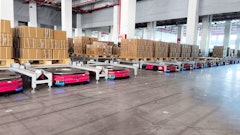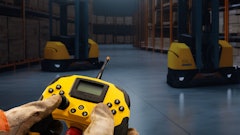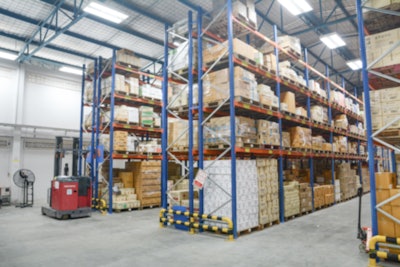
Softwood lumber has been quite the subject of headlines in the first few months of 2025. In large part, those stories have centered on ongoing trade and tariff negotiations between the United States and Canada. The close focus is certainly justified, considering roughly 30% of the softwood lumber consumed in the US is imported, with Canada responsible for more than 80% of that figure. Continuous uncertainty brings added pressure to an industry already dealing with higher prices and tighter margins.
Heightened cost inputs are all too familiar to the lumber and homebuilding industries. Beyond inflation which has risen in recent years, the cost of building materials is up 34% since the end of 2020, and recent news on lumber has created a mixed bag of sentiment. While the exemption from 10% baseline reciprocal tariffs was positive, a planned 34.45% duty is expected to take effect this year, considerably higher than the current 14.54% figure.
As it stands, the United States simply does not produce enough lumber to meet domestic demand. Unknown tariff status leaves doubt in the supply chain, leading to consequences, which include delays and potential material shortages. Ultimately, the cost of uncertainty is being paid for in cash. A recent NAHB/Wells Fargo Housing Market Index report notes that builders estimate an average cost increase of $9,200 per home due to recent tariff actions.
Given the unpredictable environment, lumber and building supply companies cannot afford to be reactive. Now is the time to use proactivity as a strength, turning to enablers of cost-control and risk mitigation. Smart warehousing strategies built on foundations of real-time visibility, mobile tools, and data-driven inventory planning offer a clear path through the trees.
Where traditional reactionary measures fall short
Unlike smart warehousing strategies built to promote clarity, traditional inventory methods have a tendency to create silos that limit visibility, coordination, and the ability to respond quickly to changing demand or supply conditions. In times of turbulence, blind spots turn into real costs. Tribal knowledge, spreadsheets, and manual tracking may be acceptable when supply chains are stable and margins forgiving, but as recent times have shown, that’s not always the case – and if anything, this scenario is much more often the exception than the rule. In an environment of rising tariffs, erratic lead times, and price volatility, some are instead turning to reactive strategies such as stockpiling.
This approach by dealers and builders involves leasing warehouses and over-ordering materials, in the hopes of mitigating future effects of material shortages or price hikes. Unfortunately, stockpiling has its downsides. Without the insights of smart warehousing strategies, a lack of visibility can mean misplaced, damaged, or forgotten inventory. It can be difficult to parse out availability and need. Beyond the risk of human error, carrying costs bring real monetary pressure when inventory turnover slows. Worse yet, overstocked materials may become obsolete or unusable down the line. Both outdated systems and reactionary hoarding are unsustainable. What’s needed is a connected, intelligent approach to inventory that’s proactive, not reactive.
Why smart lumber and building materials (LBM) warehousing is different
While the functions of smart warehousing strategies can be consistently considered best practice, their value is never greater than in times of disruption. Utilizing technology solutions is a proactive method which can shift reactivity to resilience.
· Real-time inventory dashboards
Disparate, outdated systems continue to cause headaches. With visibility across yards and warehouses, teams can move faster and make more informed decisions. In the case of stockpiling as a method to hedge against future shortages, without centralized visibility, it’s easy to lose track of what’s already in the system. Regardless of material quantity, smart warehousing dashboards powered by enterprise resource planning (ERP) systems bring dealers the clarity they need to act strategically.
· Smarter reordering via automated purchase planning
Planning engines in ERP systems use historical sales data, supplier lead times, and seasonal trends to recommend optimal reorder points. These tools can automatically generate purchase orders when stock reaches defined thresholds, helping LBM dealers avoid shortages during peak demand periods without tying up cash in excess inventory.
· Building speed without sacrificing precision
Removing guesswork from warehouse workflows speeds up operations and reduces errors. Some barcode systems help staff locate inventory without product knowledge required. Instead of relying on tribal knowledge, ERP technology enabled operational efficiency and accuracy.
· Planning for the unknown
With trade policies and tariffs shifting rapidly, LBM businesses need tools that help them anticipate impacts before they happen. ERP systems with scenario modeling capabilities allow users to simulate changes in material costs, lead times, or supplier availability. This helps teams make proactive decisions by adjusting pricing, sourcing strategies, or order timing based on data rather than guesswork.
Building an advantage in warehousing
In a market shaped by tariffs, supply disruptions, and tighter margins, the difference between reactive and strategic warehousing is in sharp focus. Smart warehousing helps turn operations into a source of flexibility and customer value. With mobile tools, real-time data, and connected systems, LBM dealers can make faster, more confident decisions. It’s not about having more technology or material; it’s about using the right tools to stay ahead and resilient in times of change.




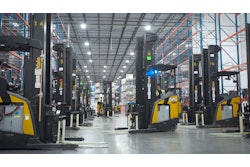

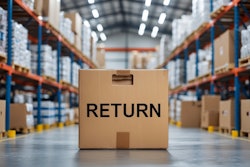

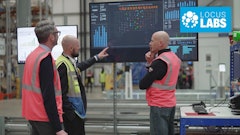





![Pros To Know 2026 [color]](https://img.sdcexec.com/mindful/acbm/workspaces/default/uploads/2025/08/prostoknow-2026-color.mduFvhpgMk.png?ar=16%3A9&auto=format%2Ccompress&bg=fff&fill-color=fff&fit=fill&h=135&q=70&w=240)
